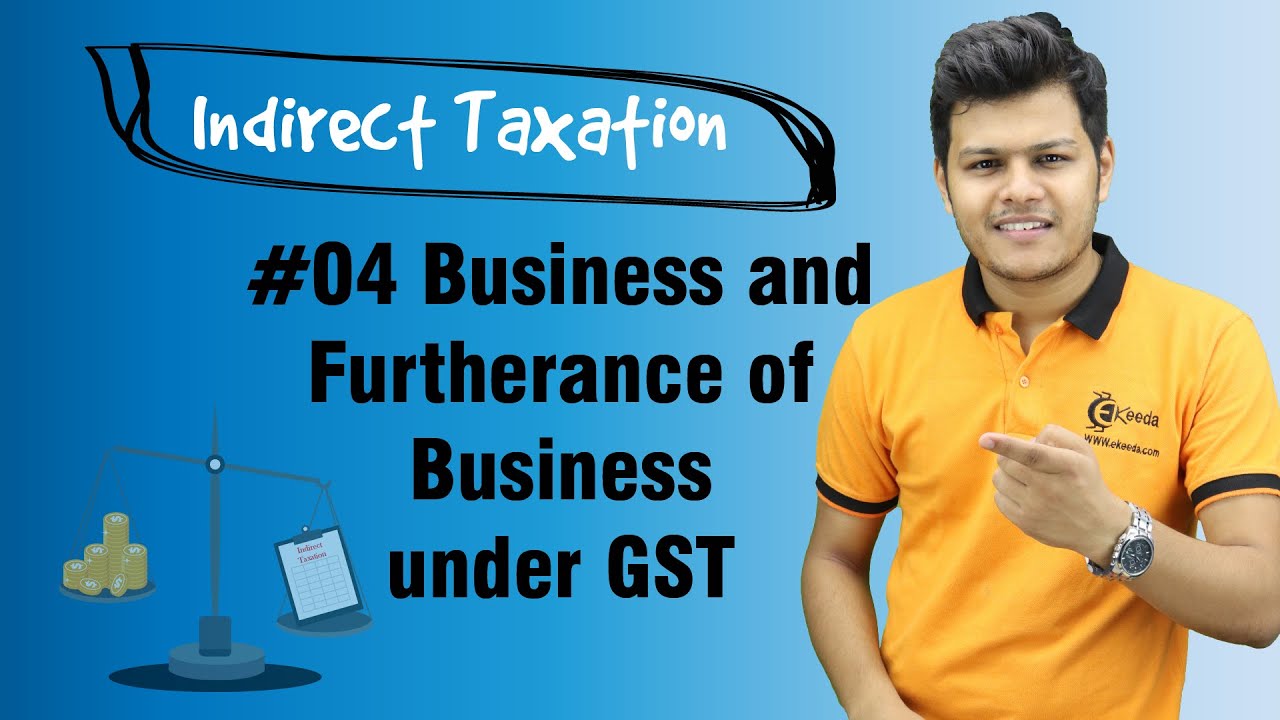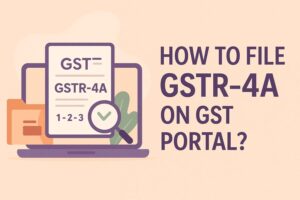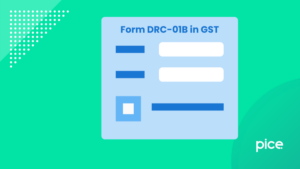Definition of Business Under GST ACT
- 20 Aug 24
- 24 mins

Definition of Business Under GST ACT
- Definition of term business in GST
- Key Characteristics of Business
- Purpose of the Phrase ‘In the Course or Furtherance of Business' Under GST
- Meaning Of The Term Business With Examples
- Examples of Business Activities
- Non-Business Activities
- Role Of The Judiciary In Defining The Term Business Under GST Act
- Before GST is used, it was levied on 3 things
- Benefits of GST Registration for Business
- What is GSTIN?
- What Does Supply Mean Under GST?
- What Are the Three Components of Supply Under GST?
- Types of Supply Under GST
- Conclusion
Key Takeaways
- Comprehensive Tax System: GST unifies multiple taxes into a single system, simplifying compliance for businesses across India.
- Mandatory Registration: Businesses exceeding the turnover threshold or engaging in inter-state supplies must register for GST to avoid penalties.
- Broad Definition of Business: GST covers a wide range of economic activities, ensuring that most transactions are subject to tax.
- Online Registration Process: The GST portal facilitates easy online registration, requiring necessary documentation and verification.
- Input Tax Credit Benefits: Registered businesses can claim input tax credits, reducing their overall tax liability and enhancing financial efficiency
The Goods and Services Tax (GST) is a comprehensive tax levied on the supply of goods and services in India. Introduced in 2017, the GST framework in India has significantly streamlined the tax system, impacting various aspects of business operations, including raw materials, business verticals, services in connection with supply, and public authorities.
Businesses must understand the implications of GST on capital assets, utilize input service distributors effectively, and comply with the e-way bill system for transporting goods.
Definition of term business in GST

Under the Goods and Services Tax (GST) framework in India, the term "business" has a broad and comprehensive definition. As per Sec. 2(17) of the CGST Act, "business" includes:
- Trade, Commerce, and Manufacture: Engaging in activities related to retail trade, commerce, manufacturing, and any similar activity, whether it is for profit or not.
- Profession or Vocation: Carrying out any profession or vocation, irrespective of the nature of the services provided.
- Adventure or Concern: Involving in any adventure or concern in the nature of sale, trade, commerce, manufacture, profession, or vocation.
- Provision of Facilities or Benefits: Providing any facilities or monetary benefits by a club, association, society, or any such body to its members.
- Admission to Premises: Admission, for a fee or otherwise, to any premises.
- Supply of Goods and Services: Activities related to the supply of goods and services or both, including single transactions in connection with commencement, or incidental or ancillary to, any indication of trade, commerce, manufacture, profession, vocation, adventure, or concern.
- Recurring Transactions: Activities that involve a recurrent supply of goods or services or both, whether or not for pecuniary benefit.
- Activities with Economic Benefit: Any activity that has the objective of earning income, profit, or gain, even if there is no actual profit earned.
This expansive definition ensures that almost all economic activities conducted by individuals, entities, or organizations fall within the scope of "business" under the GST law, thereby bringing a wide range of transactions under the GST net.
Key Characteristics of Business
Under the Goods and Services Tax (GST) framework, a "business" has specific characteristics that define its scope and application. These characteristics help distinguish business activities from personal or non-commercial activities. The key characteristics of a business subject to GST include:
- Regular Transactions: Business activities involve regular and continuous transactions. This continuity of operations is a crucial factor in identifying a business.
- Profit Motive: While not all businesses are profit-driven, the intent to earn income, profit, or gain is a defining characteristic. Even non-profit organizations conducting activities similar to those of profit-making entities can be considered businesses under GST.
- Economic Activity: Business encompasses any economic activity, whether it involves the provision of goods, services, or both. This includes manufacturing, trading, providing professional services, or any other similar activity.
- Involvement of Goods or Services: A business typically involves the supply of goods or services. This can include selling products, offering professional services, renting property, or any activity that generates revenue.
- Engagement with Customers or Clients: Businesses engage with customers or clients, offering goods or services in exchange for consideration. This engagement is a critical aspect of business operations.
- Organized Effort: Business activities are carried out in an organized manner. This organization can be formal, like a registered company, or informal, like a sole proprietorship or partnership.
- Economic Benefit: Activities conducted with the intention of earning economic benefits, such as revenue, income, or other financial gains, fall within the definition of a business.
- Involvement of Risk and Reward: Business activities typically involve taking risks and expecting rewards. The possibility of earning profits or incurring losses is inherent in business operations.
- Legal Recognition: For an activity to be considered a business under GST, it often requires some form of legal recognition or separate registration, such as obtaining a GSTIN (Goods and Services Tax Identification Number).
- Scope of Activities: The definition of business under GST is broad, covering various activities, including trade, commerce, manufacture, profession, vocation, adventure, or any similar undertaking.
Purpose of the Phrase ‘In the Course or Furtherance of Business' Under GST
The phrase "in the course or furtherance of business" holds significant importance under the Goods and Services Tax (GST) regime in India. This phrase is crucial for determining the taxability of transactions and ensuring that GST is applied correctly and fairly. Here are the primary purposes of this phrase:
- Defining Taxable Transactions: The phrase helps distinguish between transactions that are subject to GST and those that are not. Only transactions that occur "in the course or furtherance of business" are liable for GST. This ensures that personal or non-business-related activities are not taxed.
- Scope of GST Application: By defining the scope of what constitutes a business transaction, this phrase ensures that GST applies broadly to all economic activities conducted with a business intent. This includes regular trading, manufacturing, providing services, and other commercial activities.
- Clarity and Consistency: The inclusion of this phrase provides clarity and consistency in the application of GST. It helps taxpayers understand which of their activities fall within the taxable domain, reducing ambiguities and disputes.
- Compliance and Administration: For tax authorities, this phrase simplifies the administration and enforcement of GST. It creates a clear criterion for identifying taxable supplies, making it easier to monitor business compliance and collect taxes efficiently.
- Excluding Non-Business Activities: The phrase explicitly excludes non-business activities from the scope of GST. This means that personal transactions, charitable activities without a profit motive, and other non-commercial endeavors are not subject to GST, providing relief to individuals and non-profit entities.
- Economic Fairness: By ensuring that only business-related activities are taxed, the phrase promotes economic fairness. It prevents the undue taxation of personal and non-economic activities, ensuring that the tax burden falls appropriately on business operations.
- Judicial Interpretations: The phrase has been subject to various judicial interpretations, which have further clarified its meaning and application. These interpretations help businesses and tax authorities understand its implications better, ensuring more precise compliance.
- Input Tax Credit Eligibility: The phrase also plays a crucial role in determining the eligibility for input tax credit (ITC). Only inputs, capital goods, and services used "in the course or furtherance of business" are eligible for ITC. This encourages businesses to maintain accurate records and ensures that ITC is claimed only for legitimate business expenses.
- Business Expansion and Growth: By focusing on activities that further the business, the phrase encourages businesses to expand and grow. It ensures that all activities aimed at promoting, developing, or extending business operations are recognized and appropriately taxed.
Meaning Of The Term Business With Examples

Under the Goods and Services Tax (GST) framework, "business" refers to any activity that involves trade, commerce, manufacture, profession, vocation, or any similar undertaking with the intent to earn income or profit. This broad definition includes a wide range of economic activities conducted continuously and regularly.
Additionally, any retrieval services and entertainment, as well as luxury goods such as movie tickets, are subject to specific GST regulations like entertainment tax, luxury tax. Companies need to manage monetary terms and opt for separate, compulsory, or voluntary registration based on their operations.
Cancellation and grant of registration, along with GST registration services, are critical for maintaining compliance.
Examples of Business Activities
- Manufacturing and Selling Goods: This involves producing goods and selling them in the market. For instance, a factory that manufactures furniture and sells it to retailers or directly to consumers is engaged in business activities.
- Providing Professional Services: This includes offering specialized services based on professional skills or expertise. Examples include a law firm providing legal services, an accounting firm offering financial consulting, or a software company developing and selling software solutions.
- Leasing Commercial Property: Renting out commercial properties such as office spaces, warehouses, or retail shops also falls under business activities. A property owner leasing a building to businesses for office use is engaged in business under GST.
Non-Business Activities
- Personal Transactions: These are activities conducted for personal reasons and not intended to earn a profit. For example, selling a personal car is a personal transaction and not considered a business activity under GST.
- Charitable Activities Without Profit Motive: Activities carried out for charitable purposes without the intent to make a profit are not considered business activities. For instance, a non-profit organization running a free educational program for underprivileged children engages in non-business activities.
- Hobby Activities Not Intended for Profit: Engaging in hobbies or leisure activities without the goal of making money does not constitute a business. For example, a person who makes handmade crafts as a hobby and occasionally sells a few items without the intent to run a business is not engaged in business activities under GST.
Role Of The Judiciary In Defining The Term Business Under GST Act
The judiciary plays a crucial role in interpreting and defining the term "business" under the Goods and Services Tax (GST) Act. Through various judgments and rulings, courts help clarify the scope and application of GST, ensuring that the law is applied consistently and fairly. Here’s how the judiciary contributes to defining the term "business" under the GST Act:
Key Judicial Interpretations
- Clarifying Ambiguities: Courts often address ambiguities in the GST law, providing clarity on what constitutes a business activity. For instance, if there is a dispute about whether a particular activity falls under the definition of business, the judiciary's interpretation can set a precedent for future cases.
- Case Law Development: Judicial decisions create a body of case law that helps businesses and tax authorities understand the nuances of the term "business." These decisions are based on the facts of each case, legal principles, and the intent of the legislature.
- Guidance on Complex Issues: Courts provide guidance on complex issues related to business activities. For example, they may rule on whether certain transactions, such as barter exchanges or one-time sales, should be considered as business activities under GST.
- Ensuring Fair Application: The judiciary ensures that the GST law is applied fairly. By interpreting the term "business" in a manner consistent with the principles of justice and equity, courts help prevent arbitrary or unfair taxation.
Impact of Judicial Decisions
- Setting Precedents: Judicial decisions serve as precedents that influence future interpretations of the GST law. These precedents provide a reference for businesses and tax authorities, promoting uniformity in the application of the law.
- Resolving Disputes: Courts play a vital role in resolving disputes between taxpayers and tax authorities regarding the classification of activities as business under GST. Judicial rulings in such disputes offer clarity and finality, helping both parties understand their rights and obligations.
- Refining Legal Definitions: Through their rulings, courts refine the legal definitions of key terms within the GST Act, including "business." This continuous refinement ensures that the law evolves to meet new challenges and changing business practices.
Notable Judicial Contributions
- Landmark Cases: Several landmark cases have shaped the understanding of what constitutes a business under GST. For example, rulings on whether leasing activities or certain types of service provision qualify as business have had significant implications for taxpayers.
- Interpretation of Specific Provisions: Courts interpret specific provisions of the GST Act that define business activities. Their interpretations help clarify the legislative intent and provide practical guidance for implementation.
- Impact on Policy and Practice: Judicial interpretations can influence tax policy and administrative practices. When courts provide clear guidelines on the definition of business, it can lead to changes in how tax authorities enforce the law and how businesses comply with it.
Before GST is used, it was levied on 3 things

Before the introduction of the Goods and Services Tax (GST) in India, taxes were levied on three main categories:
- Goods: Taxes on goods included excise duty at the manufacturing stage and value-added tax (VAT) at the state level during the sale of goods. Central Sales Tax (CST) was also applicable to interstate sales of goods.
- Services: A service tax was levied on the provision of services. This tax was collected by the central government and applied to a wide range of services, such as hospitality, banking, and telecommunications.
- Imports: Customs duty was imposed on goods imported into the country. This included both basic customs duty and additional duties such as countervailing duty (CVD) and special additional duty (SAD).
These multiple taxes created a complex and fragmented tax system, which GST aimed to simplify by consolidating these taxes into a single, unified tax regime.
Step-by-Step Guide to GST Registration for Businesses
The Goods and Services Tax (GST) registration is a crucial process for businesses in India, as it enables them to comply with GST laws, collect GST from customers, and claim input tax credits. This guide provides a detailed, step-by-step approach to GST registration, ensuring that businesses can navigate the process smoothly.
Step-by-Step Guide to GST Registration
Eligibility Criteria
Before initiating the GST registration process, it’s essential to determine if your business meets the eligibility criteria. Businesses must register for GST if:
- Their annual turnover exceeds ₹20 lakhs (₹10 lakhs for special category states).
- They engage in inter-state taxable supplies of goods or services.
- They are required to register irrespective of turnover (e.g., e-commerce operators, casual taxable persons, or non-resident taxable persons).
Required Documents
Gathering the necessary documents is a critical step in the registration process. Here’s a list of the required documents:
- PAN Card of the business or individual (for proprietorship).
- Proof of Business Registration: Incorporation certificate or partnership deed.
- Identity Proof: Aadhaar card, voter ID, or passport of promoters/partners.
- Address Proof: Utility bills, rent agreement, or property tax receipt.
- Bank Account Details: Canceled cheque or bank statement.
- Digital Signature Certificate (DSC): Required for companies and LLPs.
Registration Process
Step 1: Visit the GST Portal: Go to the official GST portal (www.gst.gov.in) and click on the “Services” tab. Select “Registration” and then “New Registration.”
Step 2: Fill out the registration form: Complete Part A of the registration form (GST REG-01) by providing your PAN, mobile number, and email address. An OTP will be sent to your mobile and email for verification.
Step 3: Generate a Temporary Reference Number (TRN): After verification, you will receive a TRN. Use this TRN to log in and fill Part B of the registration form.
Step 4: Submit Documents: Upload the required documents mentioned above in the prescribed format.
Step 5: Verification: The GST officer will check the submitted application and documents. You may be required to provide additional information or documents if needed.
Step 6: Receive ARN: Upon successful verification, an Application Reference Number (ARN) will be generated and sent to your registered email and mobile number.
Step 7: GSTIN Allotment: Once the application is approved, you will receive your GSTIN (Goods and Services Tax Identification Number) and GST registration certificate via email.
Benefits of GST Registration for Business
- Tax Benefits
- Input Tax Credit: Businesses can claim input tax credit on purchases, reducing their tax liability.
- Compliance with Tax Laws: Proper registration ensures compliance with GST laws, avoiding penalties and legal issues.
- Legal Benefits
- Legal Recognition: GST registration provides legal recognition to your business, allowing it to operate seamlessly across states.
- Authorized to Collect GST: Only registered businesses are authorized to collect GST from customers.
- Operational Benefits
- Streamlined Processes: GST registration simplifies tax processes, making it easier to maintain records and file returns.
- Enhanced Credibility: Registration enhances the credibility and trustworthiness of your business among customers and suppliers.
What is GSTIN?
The Goods and Services Tax Identification Number (GSTIN) is a unique 15-digit identification number assigned to every business entity that registers under the Goods and Services Tax (GST) regime in India. This number is crucial for identifying a GST-registered business and is used for all GST-related processes, including filing returns, making tax payments, and claiming input tax credits.

Structure of GSTIN
The 15-digit GSTIN is structured as follows:
- First Two Digits: Represent the state code as per the Indian Census 2011. For example, 27 stands for Maharashtra, 09 for Uttar Pradesh, etc.
- Next Ten Digits: The PAN (Permanent Account Number) of the business or individual.
- Thirteenth Digit: Indicates the number of registrations a business entity code has within a state. For example, if it is the first registration, it will be 1; if it is the second registration, it will be 2, and so on.
- Fourteenth Digit: It is usually “Z” by default and has no specific meaning.
- Fifteenth Digit: A checksum digit used for error detection.
Importance of GSTIN
- Unique Identification: GSTIN uniquely identifies a business entity registered under GST, helping to maintain the integrity and transparency of the GST system.
- Tax Compliance: GSTIN is essential for filing GST returns, making tax payments, and ensuring compliance with GST laws.
- Claiming Input Tax Credit: Businesses need a GSTIN to claim input tax credits on their purchases, which helps reduce their overall tax liability.
- Inter-State Transactions: For businesses involved in inter-state transactions, having a GSTIN is mandatory to comply with GST regulations.
- Enhancing Credibility: A GSTIN enhances the credibility of a business, as it signifies that the business is compliant with tax laws and regulations.
How to Obtain GSTIN
To obtain a GSTIN, a business must register on the GST portal (www.gst.gov.in) by providing the necessary details and documents. The registration process includes filling out forms, verifying details through OTPs, and uploading required documents such as PAN, proof of business registration, and address proof. Once the application is approved, the GSTIN is issued, and the business receives its GST registration certificate.
What Does Supply Mean Under GST?
Under the Goods and Services Tax (GST) framework, the term "supply" is fundamental, as GST is levied on the supply of goods and services. The GST Act defines "supply" in a comprehensive manner, covering a wide range of activities to ensure all taxable transactions are included within its ambit.
Definition of Supply
"Supply" under GST encompasses all forms of supply of goods or services, or both, such as sale, transfer, barter, exchange, license, rental, lease, or disposal. This definition is broad and includes any activity where there is a transaction involving goods or services for consideration.
Key Aspects of Supply
- Forms of Supply: Supply includes various forms of transactions such as sales, transfers, barters, exchanges, licenses, rentals, leases, or disposals. This ensures that almost any transaction involving goods or services is covered under GST.
- Consideration: For a transaction to be considered a supply, there generally needs to be consideration involved. Consideration can be in the form of money or any other form of payment.
- Taxable Supply: Only taxable supplies are subject to GST. This means the supply must be of goods or services that are not exempt under the GST law.
- Composite and Mixed Supplies: The law also recognizes composite supplies (where two or more goods/services are naturally bundled and supplied together) and mixed supplies (where different goods/services are combined together but can be supplied separately).
Importance of Supply in GST
- Tax Liability: Understanding what constitutes supply is crucial, as GST is levied on the supply of goods and services. Correctly identifying a supply helps in determining the tax liability.
- Input Tax Credit: Businesses can claim input tax credit on the supplies they purchase, reducing their overall tax liability. Proper identification of supply is essential for claiming these credits.
- Compliance: Accurate classification of supplies ensures compliance with GST regulations, helping businesses avoid penalties and legal issues.
Types of Supply Under GST
- Intra-State Supply: When the supplier and the recipient are located within the same state, it is considered an intra-state supply. CGST (Central GST) and SGST (State GST) are levied on such transactions.
- Inter-State Supply: When the supplier and the recipient are in different states, it is an inter-state supply, and IGST (Integrated GST) is levied.
- Composite Supply: A composite supply involves two or more goods or services naturally bundled together and supplied in conjunction with each other. The tax rate applicable to the principal supply is applied to the entire bundle.
- Mixed Supply: A mixed supply involves the combination of two or more goods or services supplied together but which can be supplied separately. The highest tax rate applicable to any of the items in the bundle is applied to the entire supply.
What Are the Three Components of Supply Under GST?
Under the Goods and Services Tax (GST) framework in India, understanding the components of supply is essential for proper compliance and taxation. Supply under GST is broadly categorized into three main components: goods, services, and mixed supply. Each of these components has specific definitions and implications under the GST law.

1. Goods
Goods are defined as every kind of movable property, excluding money and securities but including actionable claims, growing crops, grass, and things attached to or form part of the land that can be severed before supply or under a contract of supply.
Examples:
- Tangible items like electronics, clothing, furniture, and vehicles.
- Agricultural produce such as grains, fruits, and vegetables.
- Actionable claims like lottery tickets.
Importance: Understanding what constitutes goods is crucial because the GST rate is levied on the supply of goods. Proper classification ensures accurate tax rates and compliance with GST laws.
2. Services
Services are defined as anything other than goods, money, and securities. This includes transactions involving the use of money or its conversion by cash or any other mode, from one form, currency, or denomination, to another form, currency, or denomination for which a separate consideration is charged.
Examples:
- Professional services like legal, accounting, and consulting.
- Hospitality services such as hotel accommodations and catering.
- Digital services include software development, streaming, and online advertising.
Importance: Just like goods, the supply of services is subject to GST. Correctly identifying services helps in determining the applicable tax rate and ensures that businesses can claim input tax credits appropriately.
3. Mixed Supply
A mixed supply refers to the combination of two or more individual supplies of goods or services or any combination thereof, made together by a taxable person for a single price, where such supplies do not constitute a composite supply.
Examples:
- A gift hamper containing chocolates, dry fruits, and a bottle of wine.
- A package deal offers a hotel stay along with meals and sightseeing tours.
Taxation: In the case of a mixed supply, the highest rate of GST applicable to any one of the items in the bundle is applied to the entire supply. For instance, if a gift hamper includes items taxed at different rates, the highest rate among them will apply to the entire hamper.
Types of Supply Under GST
The primary types of supply under GST include intra-state supply, inter-state supply, composite supply, and mixed supply.
1. Intra-State Supply
Intra-state supply refers to the supply of goods or services where the location of the supplier and the place of supply are within the same state or union territory.
Tax Implications:
- Central GST (CGST): Levied by the central government.
- State GST (SGST): Levied by the respective state government.
Example: A manufacturer in Maharashtra selling goods to a retailer within Maharashtra will be making an intra-state supply. Both CGST and SGST will be applicable to this transaction.
2. Inter-State Supply
Inter-state supply refers to the supply of goods or services where the location of the supplier and the place of supply are in different states or union territories.
Tax Implications:
- The central government's Integrated GST (IGST) replaces both CGST and SGST in interstate transactions.
Example: A manufacturer in Gujarat selling goods to a retailer in Karnataka will be making an inter-state supply. IGST will be applicable to this transaction.
3. Composite Supply
Composite supply refers to a supply made by a taxable person to a recipient, consisting of two or more goods or services, or any combination thereof, which are naturally bundled and supplied in conjunction with each other in the ordinary course of business, where one of the supplies is a principal supply.
Taxation: The entire composite supply is taxed at the rate applicable to the principal supply.
Example: A package consisting of a flight ticket and food service, where the principal supply is the transportation service. The tax rate applicable to air transportation will apply to the entire package.
4. Mixed Supply
Mixed supply refers to a combination of two or more individual supplies of goods or services, or any combination thereof, made together by a taxable person for a single price, where such supplies do not constitute a composite supply.
Taxation: The highest rate of GST applicable to any one of the items in the mixed supply is applied to the entire supply.
Example: A Diwali gift hamper containing sweets, chocolates, and a decorative item. If the highest tax rate among these items is 18%, then the entire hamper will be taxed at 18%.
Other Types of Supply
1. Zero-Rated Supply: Supplies that are taxed at 0% GST, such as exports and supplies to Special Economic Zones (SEZs). Businesses can claim input tax credit on zero-rated supplies.
2. Exempt Supply: Supplies that are not subject to GST. This includes essential goods and services such as unprocessed agricultural products and healthcare services. No input tax credit can be claimed on exempt supplies.
3. Non-Taxable Supply: Supplies that fall outside the scope of GST, such as alcohol for direct consumption and petroleum products. These items are taxed under separate state laws.
4. Deemed Supply: Transactions that are not actual supplies but are treated as supplies under GST for tax purposes, such as the supply of goods by a principal to his agent.
Conclusion
Knowing the meaning and implications of the term "furtherance of business" under GST is essential for all businesses. It helps in proper compliance, accurate tax filing, and availing of benefits under the GST regime. With the judiciary providing clarity on various aspects, businesses can operate with confidence and ensure they meet all legal requirements.
💡Facing delays in GST payment? Get started with PICE today and streamline your GST payments. Click here to sign up and take the first step towards hassle-free GST management.



















